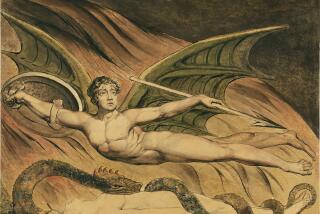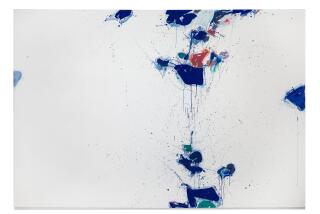Beyond Whistler’s mother
- Share via
LOUISVILLE, Ky. — Best known for immortalizing his mother on canvas, James McNeill Whistler crossed artistic boundaries to create a series of lithographs showing a versatility of style and subject.
One of the largest private collections of Whistler lithographs -- depicting landscapes, ordinary life and images of his friends and family -- will be shown at the Speed Art Museum beginning Tuesday through Nov. 2.
The exhibit is a tribute to the flamboyant American-born artist, who died 100 years ago at age 69. The collection includes three rare colored Whistler lithographs along with black-and-white works.
The exhibit features 87 Whistler lithographs plus one other, a portrait of Whistler by T.R. Way, a Whistler biographer and printer.
For visitors, the lithographs will reveal “a new side” to Whistler, said exhibit curator Kim Spence.
“His artistic vision was so broad and he was wonderfully experimental and accomplished,” said Spence, associate curator at the Speed.
His most renowned work is “Arrangement in Grey and Black: Portrait of the Painter’s Mother,” a painting better known as “Whistler’s Mother.” The painting, which has become an enduring symbol of motherhood, belongs to the Musee d’Orsay in Paris and rarely travels.
Whistler was introduced to lithography in 1878, at a time when some contemporaries, including French artists Manet, Degas and Corot, were dabbling in a medium that was scorned by many artists and critics. At the time, lithography was mainly used for industrial and commercial printing.
“He really wanted to open up the eyes of the critics and the public to the possibility of this,” Spence said.
In lithography, the artist draws onto a porous stone, generally limestone, using an oil-based crayon or oil-based liquid, called tusche. The stone is then dampened and ink is rolled on. The ink adheres to the oily drawing and the image repels water. It’s then run through a press and the ink is transferred to paper.
Whistler’s lithographs represent some of his “most personal and experimental prints,” said Martha Tedeschi, curator of prints and drawings at the Art Institute of Chicago.
It was Whistler’s portraits of his wife, Beatrix, that touched Steven Block, inspiring him to acquire the collection on display at the Speed. Two works that gave Block his first glimpse into Whistler’s lithographic talents show Beatrix sitting or reclining on a sofa while in the early throes of cancer, which eventually took her life.
Block, a Louisville native who lives in Washington, D.C., said he was drawn to the sensitivity and subtlety of Whistler’s lithographs.
“I was moved by the tenderness with which he depicted both daily scenes and the people particularly close to him,” he said.
Whistler captured common themes in other lithographs. Some works depict shopkeepers and tradesmen. Others portray scenes that Whistler captured while strolling the streets of Paris and London.
“There is a kind of casual and spontaneous feeling about much of his work in lithography,” said Tedeschi, who was curator of an exhibit of Whistler lithographs at the Art Institute of Chicago in 1998.
“I really came to feel that in a way lithography was for him his camera, that he tried to record things that were in motion.”
Like the impressionists, Whistler turned the outdoors into his studio. He carried special transfer paper and lithographic crayons to sketch whenever inspired.
One piece, titled “Nocturne,” shows a figure adrift on a boat on the Thames River at night. Smokestacks rise in the background, along with the faint outline of London reflecting off the river.
“That was very cutting edge to see that even modern, industrial life can be beautiful,” Spence said.
The exhibit features Whistler works from 1878 to 1897 and feature scenes from Paris and London as well as elsewhere in France and England.
The minimalism of Whistler’s lithographs was avant-garde for the Victorian period, when artwork tended to be finished, moralistic and contain a narrative, Tedeschi said.
“There’s no extraneous detail, there’s no indication of the background or the surroundings,” she said. “There’s no intention to create a narrative or a story of any kind. So they are really, in some ways, the epitome of his art for art’s sake aesthetic.”
More to Read
The biggest entertainment stories
Get our big stories about Hollywood, film, television, music, arts, culture and more right in your inbox as soon as they publish.
You may occasionally receive promotional content from the Los Angeles Times.










